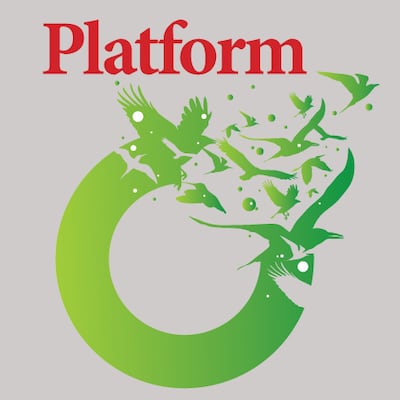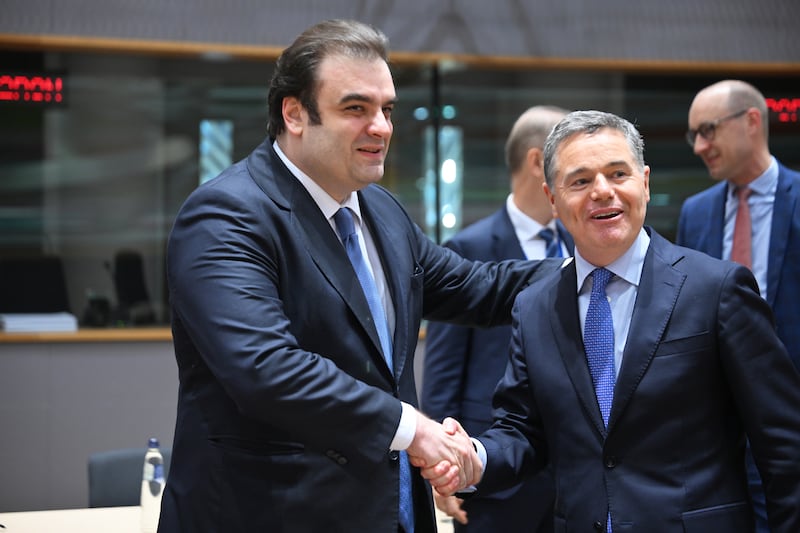I was up in our attic space at home a few weeks ago when I stumbled on a box of old press clippings from my long and, eh, distinguished journalistic career.

It was interesting, to say the least, to re-read pieces written during my earliest days on the job, full of the boundless enthusiasm (but also cringe-inducing naivety) of someone starting out on a long-dreamt career path.
But I also found one of the first – and best – articles I ever wrote; a colour piece describing my first-ever visit to a deaf club while I was a undergraduate student at Dublin City University, and published in the college paper (then called the DCU Bullsheet – such a brilliant name).
Prior to that visit, I had been learning Irish Sign Language and finding out more about the deaf community and deaf culture, all of which had been inspired by meeting another deaf student in DCU who had grown up with the Dublin deaf community. Having taken the time to seek out a few more other deaf folks, going to a deaf club seemed the next logical step.
For sign-language users all over the world, deaf clubs are like second homes, places where they can truly relax and converse with others in their preferred language.
Importance
For those who lived in Dublin, the location of the main deaf club was a large building in the heart of Drumcondra called the St Vincent's Centre for Deaf People, next door to the train station.
Suffice to say, visiting the place for the first time – and many times subsequently – quickly brought home to me the importance of deaf clubs as vitally important physical spaces where the use of sign languages can thrive and prosper – and thereby provide the glue that binds the deaf community together. This includes not just deaf people, but their hearing friends, family, co-workers, interpreters, CODAs (children of deaf adults) and many others besides.
These days the deaf club is based just a couple of miles further north in Cabra, in a new campus-type facility called Deaf Village Ireland (DVI). The club was forced out when the Government slapped a compulsory purchase order on the St Vincent's centre for use as a Metro North station back in 2008. The owner of the building, the Catholic Institute for Deaf People (CIDP), used the generous proceeds of the sale to develop the new facility on lands it owns in Cabra.
They could have built something small and modest but, in consultation with the deaf community, it chose to build a large, ambitious new facility incorporating a social centre, a suite of offices and a state-of-the-art sports facility with swimming pool. The offices are occupied by just about every deaf organisation in Ireland, including Chime (formerly Deafhear), the Irish Deaf Society, Deaf Sports Ireland, the Dublin Deaf Association, National Deaf Women of Ireland, the Irish Deaf Youth Association and the Deaf Heritage Centre, not to mention the CIDP.
In many places around the world, you will often find that the same facility that houses a deaf club also serves as offices for organisations providing services for deaf people. This makes complete sense and still does, but in an age when government policy now blindly dictates that integrating and dispersing key disability services into the wider community is the way to go, such facilities are often – and unfairly – perceived as anachronisms.
Smooth
Despite this, DVI was officially opened in 2013 and, barring a few hiccups, is running very smoothly today. A lot of people were very fond of the old Drumcondra club, but the new facility has attracted many new and regular visitors by virtue of the range of services and facilities that it offers.
Indeed, many deaf clubs around the world are struggling to stay afloat, under pressure from unsustainable business models on one side and the growing use of technology on the other, with many young people choosing not to attend.
The development of DVI was, in many ways, a response to these pressures. By including a top sports centre that is used predominantly by the local community in Cabra, as well as services for deaf people, it is something of a unique space where deaf and hearing people interact together in an ordinary, everyday environment miles – and miles away from any institutionalised feel.
I always felt the facility had tremendous potential, not least because the original vision of the place was that, eventually, it would be run and controlled by the deaf community. It’s one thing to run a deaf club, but it’s another to accept full responsibility for the running of a successful commercial business, which is the opportunity now being provided to the deaf community by the CIDP.
I was invited in 2015 to become the chairman of the DVI board of management, and since then, we’ve spent a lot of time and effort in the past couple of years in simplifying the overall management structure and devising a new strategic plan.
We’re looking forward to fully realising the potential of DVI in the years to come, which has attracted a steady stream of visitors from all over the world.
Platform Series: John Cradden
1) 'Deaf, but also iPhone-compatible
2) 'Deaf' rather than 'deaf'
3) Telling it like it is in subtitles
4) 'Deaf gain': my enhanced abilities
5) Missing out on incidental learning
6) Deaf clubs: binding the community
7) I love my cochlear implant
8) Joining the Deaf community
9) Deaf people making ourselves heard

















